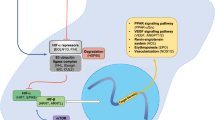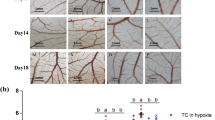Abstract
Four single-nucleotide polymorphisms (SNP) of the Phosphoglyceric Kinase (PGK) gene were discovered based on comparison of the sequences from an altiplano chicken breed (Tibetan chicken) and two lowland breeds (White Leghorn and Shouguang chicken). Gel-shift results indicate that one of these SNPs, an A→G mutation at position 59 in exon10, is able to bind hypoxia-induced factor-l (HIF-1), functioning as a hypoxia response element (HRE). The mutant gene results in M→T mutation at position 379 amino acid. The combined activity of this HRE and HIF-1 could increase correspondingly under a hypoxic stimulus. Hypoxia leads to increased death rates of chicken embryos; while the M→T mutation described herein is prevalent in healthy embryos grown under hypoxic conditions, thus it may represent an adaptation to hypoxia. Fluorescence quantitative reverse transcription PCR results revealed that HIF-1 upregulates the transcript level of the glycolytic enzyme PGK in the brain and skeletal muscle of animals subjected to hypoxia. Thus, a large amount of ATP is produced by increased glycolysis, allowing the organism to meet energy metabolism demands. As such, we believe this SNP to be an adaptation to the external anoxic environment.
Similar content being viewed by others
References
Wang G L, Semenza G L. Characterization of hypoxia-inducible factor 1 and regulation of DNA binding activity by hypoxia. J Biol Chem, 1993, 268(29): 21513–21518
Semenza G L. Expression of hypoxia-inducible factor 1: mechanisms and consequences. Biochem Pharmacol, 2000, 59(1): 47–53
Semenza G L. HIF-1, O (2), and the 3 PHDs: how animal cells signal hypoxia to the nucleus. Cell, 2001, 107(1): 1–3
Semenza G L, Roth P H, Fang H M, et al. Transcriptional regulation of genes encoding glycolytic enzymes by hypoxia-inducible factor 1. J Biol Chem, 1994, 269, 23757–23763
Semenza G L, Jiang B H, Leung S W, et al. Hypoxia response elements in the aldolase A, enolase 1, and lactate dehydrogenase A gene promoters contain essential binding sites for hypoxia-inducible factor 1. J Biol Chem, 1996, 271(51): 32579–32587
Okino, S T, Chichester C H, Whitlock J P Jr. Hypoxia-inducible mammalian gene expression analyzed in vivo at a TATA-driven promoter and at an initiator-driven promoter. J Biol Chem, 1998, 273(37): 23837–23843
Rees B B, Bowman J A, Schulte P M. Structure and sequence conservation of a putative hypoxia response element in the lactate dehydrogenase-B gene of Fundulus. Biol Bull, 2001, 200(3): 247–251
Wu C X, Zhang H, Gou X, et al. Automatization hypoxia simulation hatching. China Patent (in Chinese), 2004200668293, 2005-05-27
Dignam J D, Lebovitz R M, Roeder R G. Accurate transcription initiation by RNA polymerase II in a soluble extract from isolated mammalian nuclei. Nucleic Acids Res, 1983, 11: 1475–1489
Wong G K, Liu B, Wang J, et al. A genetic variation map for chicken with 2.8 million single-nucleotide polymorphisms. Nature, 2004, 432(7018): 717–722
Connett R J, Honig C R, Gayeski T E, et al. Defining hypoxia: A systems view of VO2, glycolysis, energetics, and intracellular PO2. J Appl Physiol, 1990, 68(3): 833–842
Green H, MacDougall J, Tarnopolsky M, et al. Downregulation of Na+-K+-ATPase pumps in skeletal muscle with training in normobaric hypoxia. J Appl Physiol, 1999, 86(5): 1745–1748
Takahashi H, Kikuchi K, Nakayama H. Effect of chronic hypoxia on oxidative enzyme activity in rat skeletal muscle. Ann Physiol Anthropol, 1993, 12(6): 363–369
Takahashi H, Kikuchi K, Nakayama H. Effect of endurance training under hypoxic condition on oxidative enzyme activity in rat skeletal muscle. Appl Human Sci, 1996, 15(3): 111–114
Desplanches D, Hoppeler H, Linossier M T, et al. Effects of training in normoxia and normobaric hypoxia on human muscle ultrastructure. Pflugers Arch, 1993, 425(3–4): 263–267
Clanton T L, Klawitter P F. Invited review: Adaptive responses of skeletal muscle to intermittent hypoxia: the known and the unknown. J Appl Physiol, 2001, 90(6): 2476–2487
Steven D M, Richard A H, Matthew J K, et al. Loss of skeletal muscle HIF-1α results in altered exercise endurance. PLOS Biology, 2004, 2(10): 1540–1548
She Y X, Tian F Y, Zhao X L, et al. Influence of low partial pressure of O2 environment during incubation on the hatchability of chicken egg. Southwest China J Agr Sci (in Chinese), 2001, 14(3): 71–74
Author information
Authors and Affiliations
Corresponding authors
Additional information
Supported by Science and Technology Project from the Ministry of Education of China (Grant No. 10404) and the National Major Basic Research Program of the National Natural Science Foundation of China (Grant No. 2006CB100200)
Rights and permissions
About this article
Cite this article
Wang, C., Yuan, C., Zhang, L. et al. Differential gene expression of phosphoglyceric kinase (PGK) and hypoxic adaptation in chicken. SCI CHINA SER C 50, 335–342 (2007). https://doi.org/10.1007/s11427-007-0050-0
Received:
Accepted:
Issue Date:
DOI: https://doi.org/10.1007/s11427-007-0050-0




